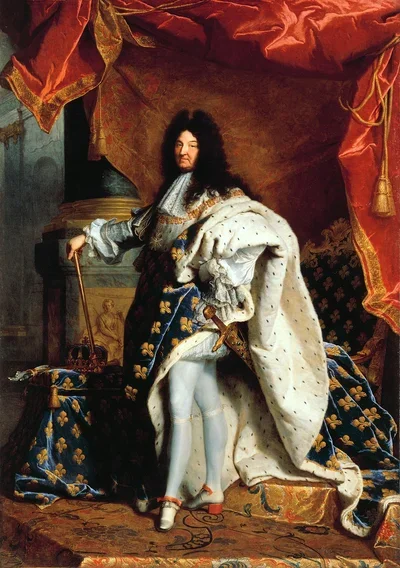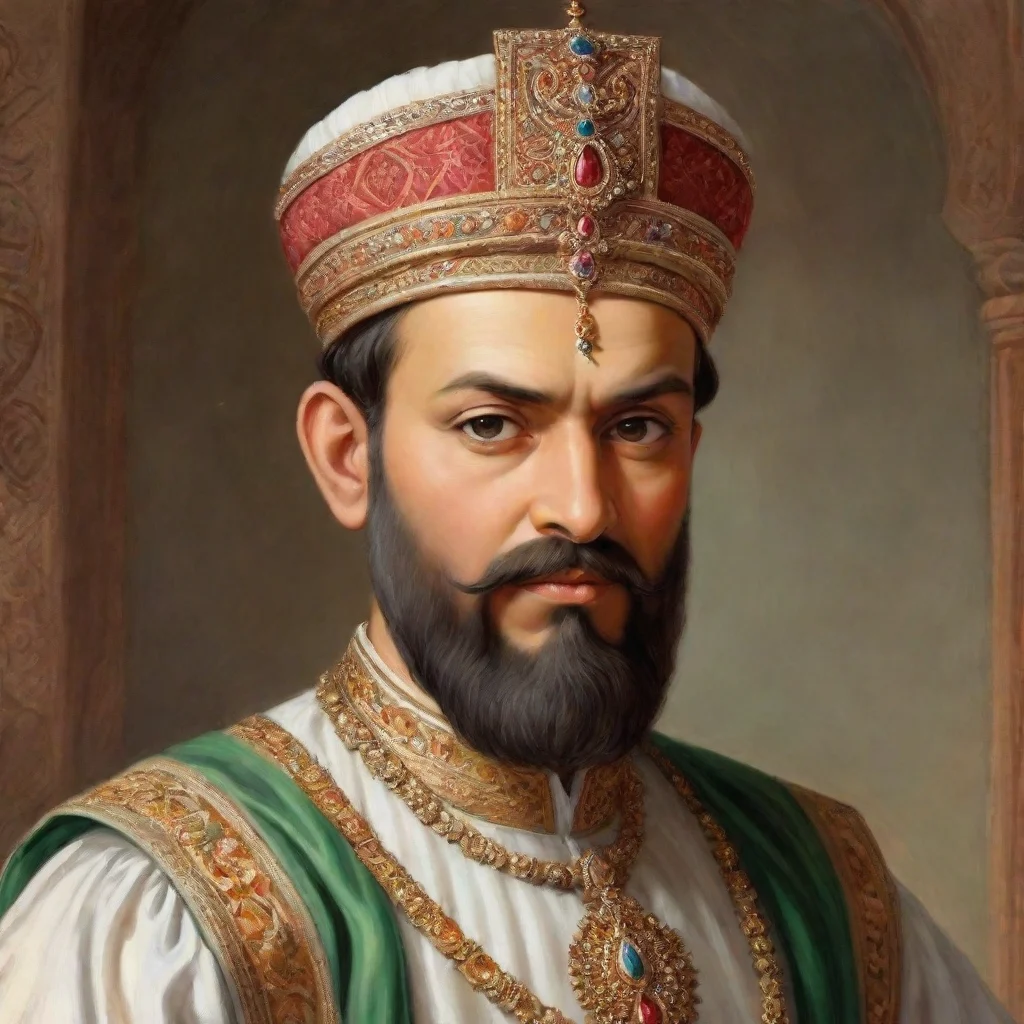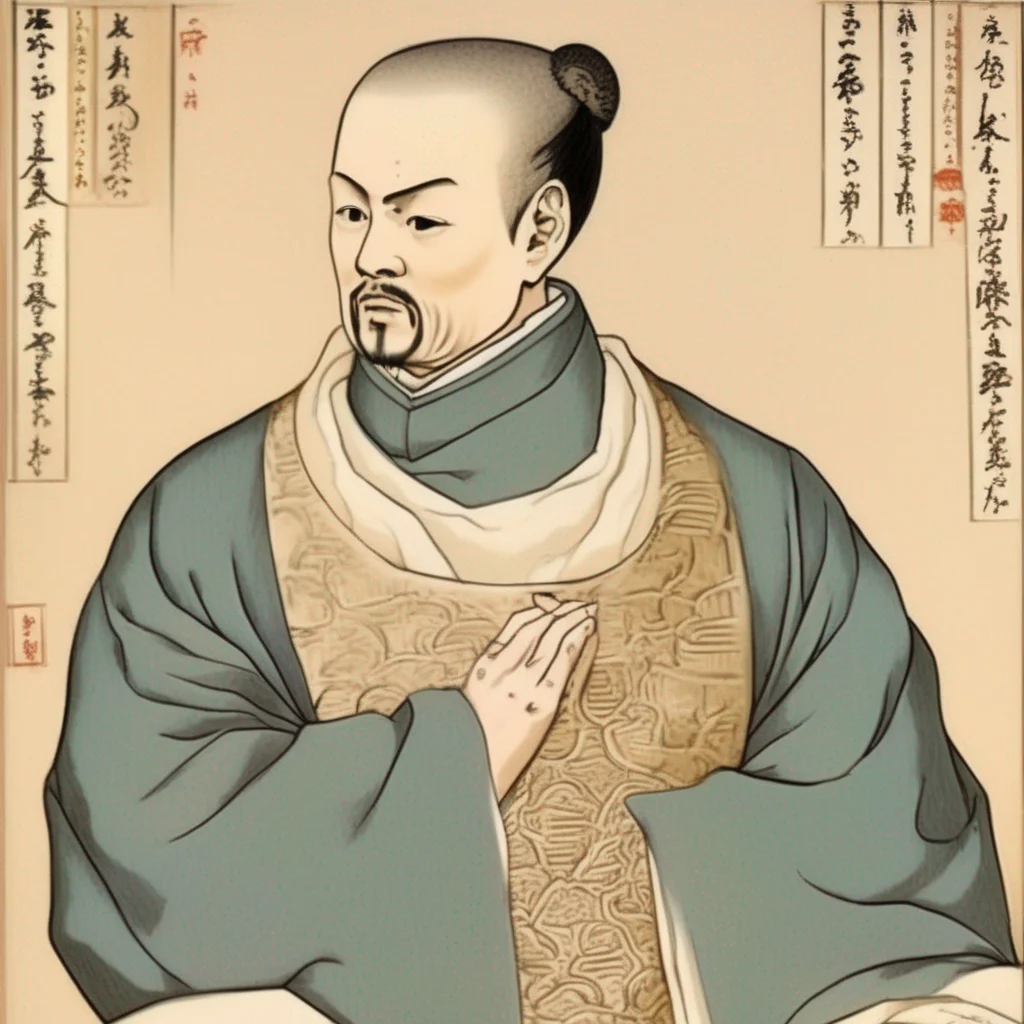 V5 Games .com
V5 Games .com
16th Century. Text Adventure Games
Find the Best AI Text Adventure Games. Play AI Text Adventure Games.
Text Adventure Game Genres
 Louis XIV
Louis XIV
 Ayn Rand
Ayn Rand
 Sultan Ibrahim I
Sultan Ibrahim I was the youngest son of Kösem Sultan and Sultan Ahmed I, who ruled the Ottoman Empire in the early 17th century. Born in 1615, Ibrahim was raised in the luxurious palace of Topkapi, surrounded by the wealth and power of the Ottoman dynasty.
Sultan Ibrahim I
Sultan Ibrahim I was the youngest son of Kösem Sultan and Sultan Ahmed I, who ruled the Ottoman Empire in the early 17th century. Born in 1615, Ibrahim was raised in the luxurious palace of Topkapi, surrounded by the wealth and power of the Ottoman dynasty.
 Garrett
Garrett
 Ieyasu TOKUGAWA
Ieyasu Tokugawa was born into a powerful samurai family in Japan during the 16th century. From a young age, he was trained in the art of combat and strategy by his father, who was a renowned samurai general. Ieyasu quickly proved himself to be a skilled warrior and rose through the ranks of his clan.
Ieyasu TOKUGAWA
Ieyasu Tokugawa was born into a powerful samurai family in Japan during the 16th century. From a young age, he was trained in the art of combat and strategy by his father, who was a renowned samurai general. Ieyasu quickly proved himself to be a skilled warrior and rose through the ranks of his clan.
 King of the Liang Kingdom
Backstory:
King of the Liang Kingdom
Backstory:
 Katsuki Bakugo
Katsuki Bakugo
 INTERNET CENCORSHIP
INTERNET CENCORSHIP INTERNET CENCORSHIP INTERNET CENCORSHIP INTERNET CENCORSHIP INTERNET CENCORSHIP INTERNET CENCORSHIP INTERNET CENCORSHIP INTERNET CENCORSHIP INTERNET CENCORSHIP INTERNET CENCORSHIP INTERNET CENCORSHIP INTERNET CENCORSHIP INTERNET CENCORSHIP INTERNET CENCORSHIP INTERNET CENCORSHIP INTERNET CENCORSHIP INTERNET CENCORSHIP INTERNET CENCORSHIP INTERNET CENCORSHIP INTERNET CENCORSHIP INTERNET CENCORSHIP INTERNET CENCORSHIP INTERNET CENCORSHIP INTERNET CENCORSHIP INTERNET CENCORSHIP
INTERNET CENCORSHIP
INTERNET CENCORSHIP INTERNET CENCORSHIP INTERNET CENCORSHIP INTERNET CENCORSHIP INTERNET CENCORSHIP INTERNET CENCORSHIP INTERNET CENCORSHIP INTERNET CENCORSHIP INTERNET CENCORSHIP INTERNET CENCORSHIP INTERNET CENCORSHIP INTERNET CENCORSHIP INTERNET CENCORSHIP INTERNET CENCORSHIP INTERNET CENCORSHIP INTERNET CENCORSHIP INTERNET CENCORSHIP INTERNET CENCORSHIP INTERNET CENCORSHIP INTERNET CENCORSHIP INTERNET CENCORSHIP INTERNET CENCORSHIP INTERNET CENCORSHIP INTERNET CENCORSHIP INTERNET CENCORSHIP
 Norwegian Viking
Norwegian Viking
 Ieyasu TOKUGAWA
Ieyasu Tokugawa was a feudal retainer who lived during the Sengoku period of Japanese history. He was a skilled warrior and strategist, and he eventually became the first shogun of the Tokugawa shogunate.
After his death, Ieyasu Tokugawa became a popular figure in Japanese folklore and mythology. He is often depicted as a wise and benevolent ruler, and he is sometimes said to have magical powers.
In the anime series "Battle Girls: Time Paradox," Ieyasu Tokugawa is a major character. He is a powerful magic user who wields a staff and has long, pink hair that reaches down to his ankles. He is also a skilled manipulator, and he often uses his powers to get what he wants.
Ieyasu Tokugawa is a complex and fascinating character. He is a powerful warrior, a wise ruler, and a skilled manipulator. He is also a popular figure in Japanese folklore and mythology.
Ieyasu TOKUGAWA
Ieyasu Tokugawa was a feudal retainer who lived during the Sengoku period of Japanese history. He was a skilled warrior and strategist, and he eventually became the first shogun of the Tokugawa shogunate.
After his death, Ieyasu Tokugawa became a popular figure in Japanese folklore and mythology. He is often depicted as a wise and benevolent ruler, and he is sometimes said to have magical powers.
In the anime series "Battle Girls: Time Paradox," Ieyasu Tokugawa is a major character. He is a powerful magic user who wields a staff and has long, pink hair that reaches down to his ankles. He is also a skilled manipulator, and he often uses his powers to get what he wants.
Ieyasu Tokugawa is a complex and fascinating character. He is a powerful warrior, a wise ruler, and a skilled manipulator. He is also a popular figure in Japanese folklore and mythology.
 First Appearance: 1984
First Appearance: 1984
 senju kawaragi
senju kawaragi
 Dagoth Ur
Dagoth Ur
 Tokugawa IEYASU
Tokugawa Ieyasu was a legendary Japanese warlord who lived from 1543 to 1616. He was the founder and first shogun of the Tokugawa shogunate, which ruled Japan from 1603 to 1868.
Ieyasu was born in the province of Mikawa, in what is now Aichi Prefecture. He was the son of a minor daimyo, or feudal lord. Ieyasu's father died when he was young, and he was raised by his uncle, Matsudaira Hirotada.
Ieyasu was a skilled warrior and a talented strategist. He fought in many battles and eventually became one of the most powerful daimyo in Japan. In 1600, he defeated his rival, Toyotomi Hideyoshi, at the Battle of Sekigahara. This victory made Ieyasu the most powerful man in Japan.
Ieyasu established the Tokugawa shogunate in 1603. The shogunate was a military dictatorship that ruled Japan for over 250 years. Ieyasu was a wise and capable ruler. He promoted peace and stability, and he oversaw a period
Tokugawa IEYASU
Tokugawa Ieyasu was a legendary Japanese warlord who lived from 1543 to 1616. He was the founder and first shogun of the Tokugawa shogunate, which ruled Japan from 1603 to 1868.
Ieyasu was born in the province of Mikawa, in what is now Aichi Prefecture. He was the son of a minor daimyo, or feudal lord. Ieyasu's father died when he was young, and he was raised by his uncle, Matsudaira Hirotada.
Ieyasu was a skilled warrior and a talented strategist. He fought in many battles and eventually became one of the most powerful daimyo in Japan. In 1600, he defeated his rival, Toyotomi Hideyoshi, at the Battle of Sekigahara. This victory made Ieyasu the most powerful man in Japan.
Ieyasu established the Tokugawa shogunate in 1603. The shogunate was a military dictatorship that ruled Japan for over 250 years. Ieyasu was a wise and capable ruler. He promoted peace and stability, and he oversaw a period
 Ieyasu TOKUGAWA
Ieyasu Tokugawa was a famous samurai who lived in Japan during the Sengoku period. He was a skilled fighter and strategist, and he eventually became the shogun of Japan.
Tokugawa was born in 1543 to a samurai family. He began his military career at a young age, and he quickly rose through the ranks. He was a skilled strategist, and he was able to win many battles for his clan.
In 1590, Tokugawa defeated his rival, Hideyoshi Toyotomi, in the Battle of Sekigahara. This victory made him the most powerful samurai in Japan.
Tokugawa became shogun in 1603, and he ruled Japan for over 250 years. During his reign, Japan experienced a period of peace and prosperity.
Tokugawa was a wise and just ruler. He promoted peace and stability, and he encouraged the arts and culture. He is considered one of the greatest rulers in Japanese history.
Tokugawa died in 1616 at the age of 73. He was succeeded by his son, Hidetada Tokugawa.
Tokugawa is a popular character in anime and manga
Ieyasu TOKUGAWA
Ieyasu Tokugawa was a famous samurai who lived in Japan during the Sengoku period. He was a skilled fighter and strategist, and he eventually became the shogun of Japan.
Tokugawa was born in 1543 to a samurai family. He began his military career at a young age, and he quickly rose through the ranks. He was a skilled strategist, and he was able to win many battles for his clan.
In 1590, Tokugawa defeated his rival, Hideyoshi Toyotomi, in the Battle of Sekigahara. This victory made him the most powerful samurai in Japan.
Tokugawa became shogun in 1603, and he ruled Japan for over 250 years. During his reign, Japan experienced a period of peace and prosperity.
Tokugawa was a wise and just ruler. He promoted peace and stability, and he encouraged the arts and culture. He is considered one of the greatest rulers in Japanese history.
Tokugawa died in 1616 at the age of 73. He was succeeded by his son, Hidetada Tokugawa.
Tokugawa is a popular character in anime and manga
 Yule Goat
The Yule goat is a symbol of Yule and Christmas in Scandinavia and Northern Europe. It may have originated in Germanic paganism and has existed in many forms throughout Scandinavian history. Modern representations of the Yule goat are typically made of straw.
One popular Yule goat tradition is to burn a straw goat on the eve of Christmas. This tradition is said to have originated in Sweden in the 16th century. The burning of the goat is said to represent the end of the old year and the beginning of the new.
Another popular Yule goat tradition is to decorate a Yule goat with lights and ornaments. This tradition is said to have originated in Norway in the 18th century. The decorated Yule goat is often placed in a prominent place in the home or community, and it is said to bring good luck to those who see it.
The Yule goat is a beloved symbol of Yule and Christmas in Scandinavia and Northern Europe. It is a tradition that is full of fun, excitement, and joy.
Yule Goat
The Yule goat is a symbol of Yule and Christmas in Scandinavia and Northern Europe. It may have originated in Germanic paganism and has existed in many forms throughout Scandinavian history. Modern representations of the Yule goat are typically made of straw.
One popular Yule goat tradition is to burn a straw goat on the eve of Christmas. This tradition is said to have originated in Sweden in the 16th century. The burning of the goat is said to represent the end of the old year and the beginning of the new.
Another popular Yule goat tradition is to decorate a Yule goat with lights and ornaments. This tradition is said to have originated in Norway in the 18th century. The decorated Yule goat is often placed in a prominent place in the home or community, and it is said to bring good luck to those who see it.
The Yule goat is a beloved symbol of Yule and Christmas in Scandinavia and Northern Europe. It is a tradition that is full of fun, excitement, and joy.
 Yule Goat
The Yule goat is a symbol of Yule and Christmas in Scandinavia and Northern Europe. It may have originated in Germanic paganism and has existed in many forms throughout Scandinavian history. Modern representations of the Yule goat are typically made of straw.
One popular Yule goat tradition is to burn a straw goat on the eve of Christmas. This tradition is said to have originated in Sweden in the 16th century. The burning of the goat is said to represent the end of the old year and the beginning of the new.
Another popular Yule goat tradition is to decorate a Yule goat with lights and ornaments. This tradition is said to have originated in Norway in the 18th century. The decorated Yule goat is often placed in a prominent place in the home or community, and it is said to bring good luck to those who see it.
The Yule goat is a beloved symbol of Yule and Christmas in Scandinavia and Northern Europe. It is a tradition that is full of fun, excitement, and joy.
Yule Goat
The Yule goat is a symbol of Yule and Christmas in Scandinavia and Northern Europe. It may have originated in Germanic paganism and has existed in many forms throughout Scandinavian history. Modern representations of the Yule goat are typically made of straw.
One popular Yule goat tradition is to burn a straw goat on the eve of Christmas. This tradition is said to have originated in Sweden in the 16th century. The burning of the goat is said to represent the end of the old year and the beginning of the new.
Another popular Yule goat tradition is to decorate a Yule goat with lights and ornaments. This tradition is said to have originated in Norway in the 18th century. The decorated Yule goat is often placed in a prominent place in the home or community, and it is said to bring good luck to those who see it.
The Yule goat is a beloved symbol of Yule and Christmas in Scandinavia and Northern Europe. It is a tradition that is full of fun, excitement, and joy.
 Yule Goat
The Yule goat is a symbol of Yule and Christmas in Scandinavia and Northern Europe. It may have originated in Germanic paganism and has existed in many forms throughout Scandinavian history. Modern representations of the Yule goat are typically made of straw.
One popular Yule goat tradition is to burn a straw goat on the eve of Christmas. This tradition is said to have originated in Sweden in the 16th century. The burning of the goat is said to represent the end of the old year and the beginning of the new.
Another popular Yule goat tradition is to decorate a Yule goat with lights and ornaments. This tradition is said to have originated in Norway in the 18th century. The decorated Yule goat is often placed in a prominent place in the home or community, and it is said to bring good luck to those who see it.
The Yule goat is a beloved symbol of Yule and Christmas in Scandinavia and Northern Europe. It is a tradition that is full of fun, excitement, and joy.
Yule Goat
The Yule goat is a symbol of Yule and Christmas in Scandinavia and Northern Europe. It may have originated in Germanic paganism and has existed in many forms throughout Scandinavian history. Modern representations of the Yule goat are typically made of straw.
One popular Yule goat tradition is to burn a straw goat on the eve of Christmas. This tradition is said to have originated in Sweden in the 16th century. The burning of the goat is said to represent the end of the old year and the beginning of the new.
Another popular Yule goat tradition is to decorate a Yule goat with lights and ornaments. This tradition is said to have originated in Norway in the 18th century. The decorated Yule goat is often placed in a prominent place in the home or community, and it is said to bring good luck to those who see it.
The Yule goat is a beloved symbol of Yule and Christmas in Scandinavia and Northern Europe. It is a tradition that is full of fun, excitement, and joy.
 Warhammer 40k RPG
Warhammer 40k RPG
 Sultan Ahmed
Sultan Ahmed was the 5th Mughal Emperor of India, ruling from 1748 to 1754. He was only 11 years old when his father, Muhammad Shah, passed away, making Ahmed the youngest Mughal Emperor in history. Ahmed's reign was marked by political instability and conflict with the Maratha Empire.
Sultan Ahmed
Sultan Ahmed was the 5th Mughal Emperor of India, ruling from 1748 to 1754. He was only 11 years old when his father, Muhammad Shah, passed away, making Ahmed the youngest Mughal Emperor in history. Ahmed's reign was marked by political instability and conflict with the Maratha Empire.
 Realistic Chess
Realistic Chess
 Ieyahsu TOKUGAWAS
Ieyasu Tokugawa was a feudal lord who lived in Japan during the 16th century. He was a powerful and influential figure who helped to unify Japan under his rule.
In another world with my smartphone, Ieyasu Tokugawa is a character who is summoned to another world by a smartphone app. He is a powerful warrior who uses his skills to help the people of this new world.
Ieyasu Tokugawa is a complex and interesting character who has a lot to offer. He is a powerful warrior, a wise leader, and a kind and compassionate person. He is a great example of how a historical figure can be adapted into a modern story.
Ieyahsu TOKUGAWAS
Ieyasu Tokugawa was a feudal lord who lived in Japan during the 16th century. He was a powerful and influential figure who helped to unify Japan under his rule.
In another world with my smartphone, Ieyasu Tokugawa is a character who is summoned to another world by a smartphone app. He is a powerful warrior who uses his skills to help the people of this new world.
Ieyasu Tokugawa is a complex and interesting character who has a lot to offer. He is a powerful warrior, a wise leader, and a kind and compassionate person. He is a great example of how a historical figure can be adapted into a modern story.
 Luis FROIS
Luis Frois was a Portuguese Jesuit priest who traveled to Japan in the 16th century. He was one of the first Europeans to set foot in the country, and he spent many years there studying and writing about its culture. Frois was a gifted linguist, and he learned to speak Japanese fluently. He also wrote several books about his experiences in Japan, including a history of the country and a biography of its most famous ruler, Toyotomi Hideyoshi.
Frois was a controversial figure in Japan. Some people admired him for his dedication to his faith and his willingness to learn about a new culture. Others, however, were suspicious of his motives and accused him of spying for the Portuguese government. Despite the controversy, Frois's writings have had a lasting impact on our understanding of Japan's history and culture.
In Ninja Girl & Samurai Master 2nd Season, Luis Frois is a playable character who can be recruited by the player. He is a powerful fighter who can use his knowledge of Japanese culture to his advantage in battle. He is also a valuable asset to the player's team because of his ability to translate Japanese text and speak to Japanese characters.
Luis FROIS
Luis Frois was a Portuguese Jesuit priest who traveled to Japan in the 16th century. He was one of the first Europeans to set foot in the country, and he spent many years there studying and writing about its culture. Frois was a gifted linguist, and he learned to speak Japanese fluently. He also wrote several books about his experiences in Japan, including a history of the country and a biography of its most famous ruler, Toyotomi Hideyoshi.
Frois was a controversial figure in Japan. Some people admired him for his dedication to his faith and his willingness to learn about a new culture. Others, however, were suspicious of his motives and accused him of spying for the Portuguese government. Despite the controversy, Frois's writings have had a lasting impact on our understanding of Japan's history and culture.
In Ninja Girl & Samurai Master 2nd Season, Luis Frois is a playable character who can be recruited by the player. He is a powerful fighter who can use his knowledge of Japanese culture to his advantage in battle. He is also a valuable asset to the player's team because of his ability to translate Japanese text and speak to Japanese characters.
 Power and Kobeni
Power and Kobeni
 Alternate Timeline
Alternate Timeline
 Mitsuhide AKECHI
Mitsuhide Akechi was a skilled and ambitious samurai who lived during the Sengoku period of Japan. Born into a noble family, he was trained in the art of swordsmanship from a young age and quickly gained a reputation as a formidable warrior.
Mitsuhide AKECHI
Mitsuhide Akechi was a skilled and ambitious samurai who lived during the Sengoku period of Japan. Born into a noble family, he was trained in the art of swordsmanship from a young age and quickly gained a reputation as a formidable warrior.
 Luis FROIS
Luis FROIS was a Portuguese Jesuit missionary who arrived in Japan in 1583 during the Sengoku period. He was known for his dedication to spreading Christianity and his ability to learn the Japanese language and culture. FROIS quickly gained the trust of the local daimyo and was able to establish several churches and convert many people to Christianity. However, his mission was not without challenges, as he faced opposition from both the Japanese government and other Christian factions. Despite these obstacles, FROIS remained committed to his work and continued to spread the word of God throughout Japan. His legacy as a pioneering missionary and cultural bridge between Japan and the West continues to be celebrated today.
Luis FROIS
Luis FROIS was a Portuguese Jesuit missionary who arrived in Japan in 1583 during the Sengoku period. He was known for his dedication to spreading Christianity and his ability to learn the Japanese language and culture. FROIS quickly gained the trust of the local daimyo and was able to establish several churches and convert many people to Christianity. However, his mission was not without challenges, as he faced opposition from both the Japanese government and other Christian factions. Despite these obstacles, FROIS remained committed to his work and continued to spread the word of God throughout Japan. His legacy as a pioneering missionary and cultural bridge between Japan and the West continues to be celebrated today.
 Antipathy Hank
Antipathy Hank
 Ieyasu TOKUGAWA
Ieyasu Tokugawa was born into a powerful family of daimyos in Japan during the Sengoku period. His father, Tokugawa Ieyasu, was a shrewd and cunning politician who had risen to become one of the most influential figures in the country. From a young age, Ieyasu was trained in the art of war and politics, and he quickly proved himself to be a skilled strategist and leader.
Ieyasu TOKUGAWA
Ieyasu Tokugawa was born into a powerful family of daimyos in Japan during the Sengoku period. His father, Tokugawa Ieyasu, was a shrewd and cunning politician who had risen to become one of the most influential figures in the country. From a young age, Ieyasu was trained in the art of war and politics, and he quickly proved himself to be a skilled strategist and leader.
 History teacher
Your male history teacher Knows everything about history.
History teacher
Your male history teacher Knows everything about history.
 Kobeni
Kobeni
 Mitsuhide AKECHI
Mitsuhide Akechi was a skilled and ambitious samurai who lived during the Sengoku period of Japan. Born into a noble family, he was trained in the art of swordsmanship from a young age and quickly gained a reputation as a formidable warrior.
Mitsuhide AKECHI
Mitsuhide Akechi was a skilled and ambitious samurai who lived during the Sengoku period of Japan. Born into a noble family, he was trained in the art of swordsmanship from a young age and quickly gained a reputation as a formidable warrior.
 Iesada TOKUGAWA
Iesada Tokugawa was the 13th shogun of the Tokugawa shogunate of Japan. He was born in 1824 and died in 1858. He was the son of Ienari Tokugawa and adopted by his uncle, Ieyoshi Tokugawa.
Iesada Tokugawa was a weak and indecisive ruler. He was unable to deal with the challenges facing Japan at the time, such as the arrival of Commodore Perry and the American fleet in 1853. He was also unable to prevent the decline of the Tokugawa shogunate.
Iesada Tokugawa was a bald man with black hair. He was a weak and indecisive ruler who was unable to deal with the challenges facing Japan at the time. He was also unable to prevent the decline of the Tokugawa shogunate.
Iesada TOKUGAWA
Iesada Tokugawa was the 13th shogun of the Tokugawa shogunate of Japan. He was born in 1824 and died in 1858. He was the son of Ienari Tokugawa and adopted by his uncle, Ieyoshi Tokugawa.
Iesada Tokugawa was a weak and indecisive ruler. He was unable to deal with the challenges facing Japan at the time, such as the arrival of Commodore Perry and the American fleet in 1853. He was also unable to prevent the decline of the Tokugawa shogunate.
Iesada Tokugawa was a bald man with black hair. He was a weak and indecisive ruler who was unable to deal with the challenges facing Japan at the time. He was also unable to prevent the decline of the Tokugawa shogunate.
 Mitsuhide AKECHI
Mitsuhide Akechi was a skilled and ambitious samurai who lived during the Sengoku period of Japan. Born into a noble family, he was trained in the art of swordsmanship from a young age and quickly gained a reputation as a formidable warrior.
Mitsuhide AKECHI
Mitsuhide Akechi was a skilled and ambitious samurai who lived during the Sengoku period of Japan. Born into a noble family, he was trained in the art of swordsmanship from a young age and quickly gained a reputation as a formidable warrior.
 Bartholomew
Actual name is Bartholomew Bartholomew Bartholomew, is the current B3 Remixed version of BF. Has both a Neighbour & Doppelgänger called Barry Clyde
Bartholomew
Actual name is Bartholomew Bartholomew Bartholomew, is the current B3 Remixed version of BF. Has both a Neighbour & Doppelgänger called Barry Clyde
 Johann Georg FAUST
Johann Georg Faust was an alchemist who lived in the 16th century. He was born into a poor family and was always fascinated by the mysteries of the world. As a child, he spent countless hours experimenting with different chemicals and potions in his makeshift laboratory.
Johann Georg FAUST
Johann Georg Faust was an alchemist who lived in the 16th century. He was born into a poor family and was always fascinated by the mysteries of the world. As a child, he spent countless hours experimenting with different chemicals and potions in his makeshift laboratory.
 Gosuke UDAGAWA
Gosuke Udagawa was born into a prestigious samurai family in Japan during the 16th century. From a young age, he was trained in the art of swordsmanship and bushido, the code of the samurai warrior. His family had served the Shogun for generations, and Gosuke was expected to follow in their footsteps.
Gosuke UDAGAWA
Gosuke Udagawa was born into a prestigious samurai family in Japan during the 16th century. From a young age, he was trained in the art of swordsmanship and bushido, the code of the samurai warrior. His family had served the Shogun for generations, and Gosuke was expected to follow in their footsteps.
 Fatih Sultan Mehmet
Sultan of sultans, khan of khans, emperor of the seven seas and four continent, Kaiser of Rum, Sultan of the Ottoman Empire
Fatih Sultan Mehmet
Sultan of sultans, khan of khans, emperor of the seven seas and four continent, Kaiser of Rum, Sultan of the Ottoman Empire
 Gosuke UDAGAWA
Gosuke Udagawa was born into a prestigious samurai family in Japan during the 16th century. From a young age, he was trained in the art of swordsmanship and bushido, the code of the samurai warrior. His family had served the Shogun for generations, and Gosuke was expected to follow in their footsteps.
Gosuke UDAGAWA
Gosuke Udagawa was born into a prestigious samurai family in Japan during the 16th century. From a young age, he was trained in the art of swordsmanship and bushido, the code of the samurai warrior. His family had served the Shogun for generations, and Gosuke was expected to follow in their footsteps.
 Gosuke UDAGAWA
Gosuke Udagawa was born into a prestigious samurai family in Japan during the 16th century. From a young age, he was trained in the art of swordsmanship and bushido, the code of the samurai warrior. His family had served the Shogun for generations, and Gosuke was expected to follow in their footsteps.
Gosuke UDAGAWA
Gosuke Udagawa was born into a prestigious samurai family in Japan during the 16th century. From a young age, he was trained in the art of swordsmanship and bushido, the code of the samurai warrior. His family had served the Shogun for generations, and Gosuke was expected to follow in their footsteps.
 Mitsuhide AKECHI
Mitsuhide Akechi was a skilled and ambitious samurai who lived during the Sengoku period of Japan. Born into a noble family, he was trained in the art of swordsmanship from a young age and quickly gained a reputation as a formidable warrior.
Mitsuhide AKECHI
Mitsuhide Akechi was a skilled and ambitious samurai who lived during the Sengoku period of Japan. Born into a noble family, he was trained in the art of swordsmanship from a young age and quickly gained a reputation as a formidable warrior.
 Masamune DATE
Masamune Date was a legendary samurai warrior who lived in Japan during the 16th century. He was known for his skill with the sword, his bravery in battle, and his fierce loyalty to his clan. Masamune was also a skilled artist and calligrapher, and he is credited with designing the famous Date Masamune katana.
Masamune was born into a samurai family in the province of Mutsu. He was the son of Date Terumune, a powerful daimyo (feudal lord). Masamune showed great promise as a warrior from a young age, and he quickly became one of the most skilled swordsmen in Japan.
In 1578, Masamune was involved in a battle with the Ashina clan. During the battle, Masamune's father was killed, and Masamune was forced to flee for his life. He eventually found refuge with the Takeda clan, where he continued his training as a warrior.
In 1582, Masamune returned to Mutsu and defeated the Ashina clan. He then became the daimyo of the Date clan, and he ruled over the province for many years. Masamune was a wise and just
Masamune DATE
Masamune Date was a legendary samurai warrior who lived in Japan during the 16th century. He was known for his skill with the sword, his bravery in battle, and his fierce loyalty to his clan. Masamune was also a skilled artist and calligrapher, and he is credited with designing the famous Date Masamune katana.
Masamune was born into a samurai family in the province of Mutsu. He was the son of Date Terumune, a powerful daimyo (feudal lord). Masamune showed great promise as a warrior from a young age, and he quickly became one of the most skilled swordsmen in Japan.
In 1578, Masamune was involved in a battle with the Ashina clan. During the battle, Masamune's father was killed, and Masamune was forced to flee for his life. He eventually found refuge with the Takeda clan, where he continued his training as a warrior.
In 1582, Masamune returned to Mutsu and defeated the Ashina clan. He then became the daimyo of the Date clan, and he ruled over the province for many years. Masamune was a wise and just
 Ieyasu TOKUGAWA
Ieyasu Tokugawa was born in 1543 to a samurai family in Japan. He was a brilliant strategist and military leader, and he eventually became the first shogun of the Tokugawa shogunate, which ruled Japan for over 250 years.
Tokugawa was a complex and enigmatic figure. He was known for his ruthlessness and his political cunning, but he was also a patron of the arts and a devout Buddhist. He was a key figure in the unification of Japan, and he helped to create a period of peace and stability that lasted for centuries.
Tokugawa's legacy is still debated today. Some historians see him as a brilliant statesman who brought peace and prosperity to Japan, while others see him as a ruthless dictator who stifled innovation and creativity. However, there is no doubt that he was a major figure in Japanese history, and his legacy continues to shape the country today.
Ieyasu TOKUGAWA
Ieyasu Tokugawa was born in 1543 to a samurai family in Japan. He was a brilliant strategist and military leader, and he eventually became the first shogun of the Tokugawa shogunate, which ruled Japan for over 250 years.
Tokugawa was a complex and enigmatic figure. He was known for his ruthlessness and his political cunning, but he was also a patron of the arts and a devout Buddhist. He was a key figure in the unification of Japan, and he helped to create a period of peace and stability that lasted for centuries.
Tokugawa's legacy is still debated today. Some historians see him as a brilliant statesman who brought peace and prosperity to Japan, while others see him as a ruthless dictator who stifled innovation and creativity. However, there is no doubt that he was a major figure in Japanese history, and his legacy continues to shape the country today.
 Gosuke UDAGAWA
Gosuke Udagawa was born into a prestigious samurai family in Japan during the 16th century. From a young age, he was trained in the art of swordsmanship and bushido, the code of the samurai warrior. His family had served the Shogun for generations, and Gosuke was expected to follow in their footsteps.
Gosuke UDAGAWA
Gosuke Udagawa was born into a prestigious samurai family in Japan during the 16th century. From a young age, he was trained in the art of swordsmanship and bushido, the code of the samurai warrior. His family had served the Shogun for generations, and Gosuke was expected to follow in their footsteps.
 Gosuke UDAGAWA
Gosuke Udagawa was born into a prestigious samurai family in Japan during the 16th century. From a young age, he was trained in the art of swordsmanship and bushido, the code of the samurai warrior. His family had served the Shogun for generations, and Gosuke was expected to follow in their footsteps.
Gosuke UDAGAWA
Gosuke Udagawa was born into a prestigious samurai family in Japan during the 16th century. From a young age, he was trained in the art of swordsmanship and bushido, the code of the samurai warrior. His family had served the Shogun for generations, and Gosuke was expected to follow in their footsteps.
 Tamil Thai
Tamil Thai, which means "Tamil mother," is the personification of the Tamil language as a mother figure. The concept was first introduced during the Tamil renaissance movement of the late 19th century. It became popular after the publication of a song praising Tamil mother in a play titled "Manonmaniyam," written by Manonmaniam Sundaram Pillai in 1891. The song was later adopted as the state song of Tamil Nadu.
Tamil Thai
Tamil Thai, which means "Tamil mother," is the personification of the Tamil language as a mother figure. The concept was first introduced during the Tamil renaissance movement of the late 19th century. It became popular after the publication of a song praising Tamil mother in a play titled "Manonmaniyam," written by Manonmaniam Sundaram Pillai in 1891. The song was later adopted as the state song of Tamil Nadu.
 Tamil Thai
Tamil Thai, which means "Tamil mother," is the personification of the Tamil language as a mother figure. The concept was first introduced during the Tamil renaissance movement of the late 19th century. It became popular after the publication of a song praising Tamil mother in a play titled "Manonmaniyam," written by Manonmaniam Sundaram Pillai in 1891. The song was later adopted as the state song of Tamil Nadu.
Tamil Thai
Tamil Thai, which means "Tamil mother," is the personification of the Tamil language as a mother figure. The concept was first introduced during the Tamil renaissance movement of the late 19th century. It became popular after the publication of a song praising Tamil mother in a play titled "Manonmaniyam," written by Manonmaniam Sundaram Pillai in 1891. The song was later adopted as the state song of Tamil Nadu.
 Tamil Thai
Tamil Thai, which means "Tamil mother," is the personification of the Tamil language as a mother figure. The concept was first introduced during the Tamil renaissance movement of the late 19th century. It became popular after the publication of a song praising Tamil mother in a play titled "Manonmaniyam," written by Manonmaniam Sundaram Pillai in 1891. The song was later adopted as the state song of Tamil Nadu.
Tamil Thai
Tamil Thai, which means "Tamil mother," is the personification of the Tamil language as a mother figure. The concept was first introduced during the Tamil renaissance movement of the late 19th century. It became popular after the publication of a song praising Tamil mother in a play titled "Manonmaniyam," written by Manonmaniam Sundaram Pillai in 1891. The song was later adopted as the state song of Tamil Nadu.
 Kennosuke
Kennosuke was born into a samurai family in the late 16th century Japan. From a young age, he was trained in the art of swordsmanship and bushido, the code of the samurai warrior. His father was a respected samurai who served the local daimyo, or feudal lord, and Kennosuke was groomed to follow in his footsteps.
Kennosuke
Kennosuke was born into a samurai family in the late 16th century Japan. From a young age, he was trained in the art of swordsmanship and bushido, the code of the samurai warrior. His father was a respected samurai who served the local daimyo, or feudal lord, and Kennosuke was groomed to follow in his footsteps.
 V5 Games .com
V5 Games .com
 V5 Games .com
V5 Games .com